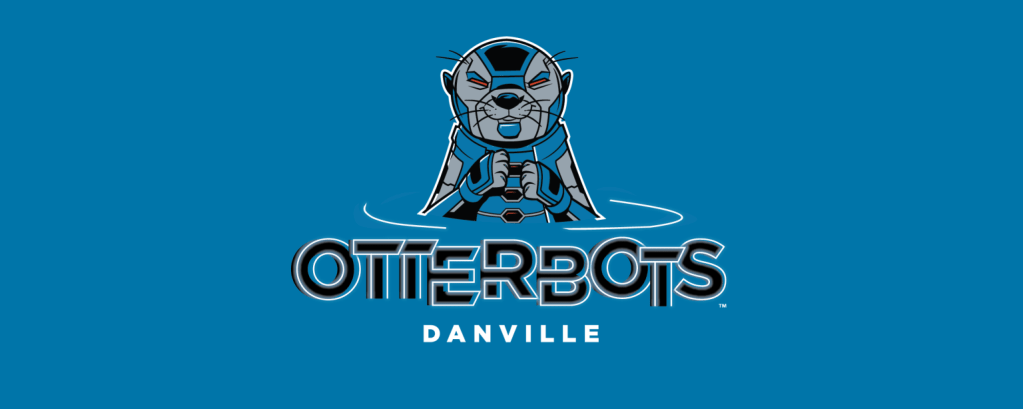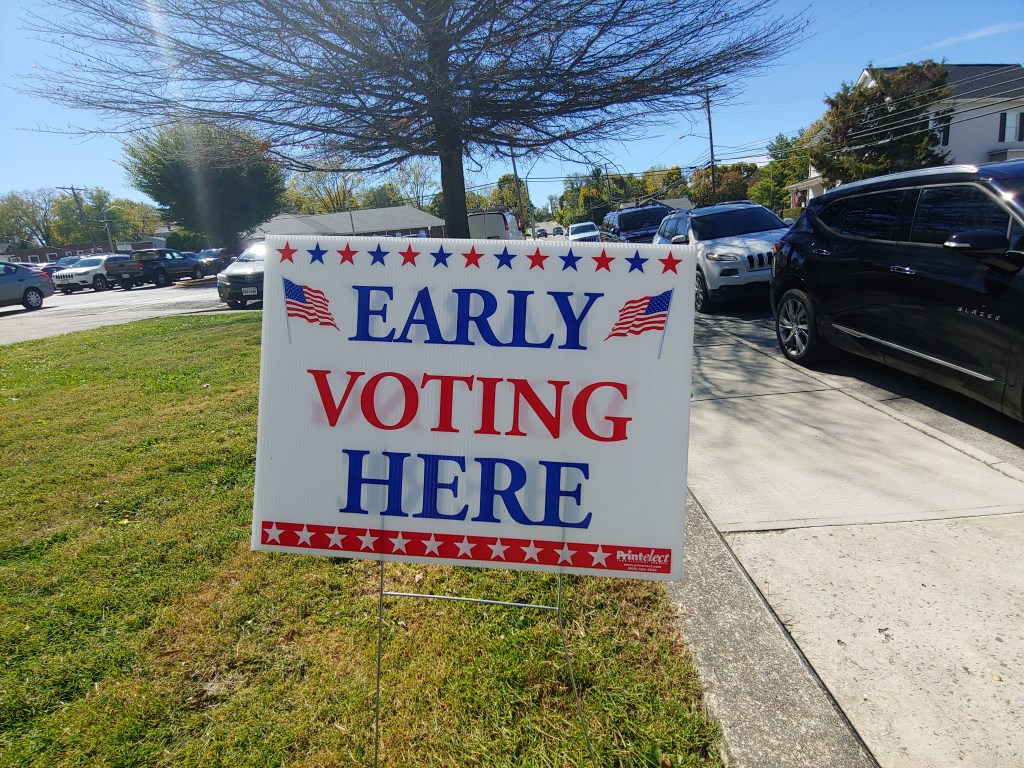I will not write about the Dairy Daddies.
I will not fall for the cheap marketing ploy by which a new Danville summer league collegiate baseball team has adopted what the team admits is a “sensual” name and mascot as a way to draw attention — and has embarked on a series of promotions such as “Teat-Tugging Thursdays” and on social media has taken up some blush-inducing hashtags such as #DaddiesAfterDark.
To do that would be beneath my dignity as a serious journalist.

Instead, I will write about serious things, such as how Danville, a city written off for dead two decades ago when the textile industry collapsed, has now made such a startling comeback that it can now support not just one but two summer league college teams. That other team is the Danville Otterbots, another made-up name that is intended to reflect both the Dan River that flows through the city (presumably it has otters) and Danville’s new reputation as a city advancing manufacturing (the “bot” part). I will grudgingly admit that the Otterbots name proved so successful marketing-wise that when the team’s ownership branched out to add another team in a different league, it turned up the gimmick name generator to the proverbial 11.
I will not acknowledge that even The Wall Street Journal has been suckered into writing about the Dairy Daddies in a story headlined “When did minor league baseball get raunchy?” and how even that staid, respectable news organization devoted 1,012 words to a serious examination of how minor league teams are increasingly adopting unusual, even outrageous names to make a buck. The Salem Red Sox are unusual in that they still use the name of the parent club in Boston. Others in their league include the Lynchburg Hillcats, whose name is quite normal compared to the Amarillo Sod Poodles of the Texas League, the Jacksonville Jumbo Shrimp of the International League or the late, lamented New Orleans Baby Cakes, who have now become the Wichita Wind Surge of the aforementioned Texas League.
Instead, I will write about serious things, such as how this new Danville team (which takes the field May 24) is yet another data point in our ongoing examination of economic geography, and how the economy along the southern tier of Virginia is oriented quite differently than that of the rest of the state. This new Danville team will play in the Old North State League, a 22-team league where the other 21 teams are all in North Carolina. This isn’t so unusual. The Martinsville Mustangs, another summer league college team, are one of three Virginia teams in the Coastal Plain League, which otherwise stretches through the Carolinas into Georgia. The others are the Peninsula Pilots in Hampton and the Tri-City Chili Peppers in Colonial Heights. (Update: I missed these the first time around due to not having a specific city in their place names; thanks to the readers who alerted me otherwise!) A few years ago, some geographers conducted a study of commuting patterns across the country and drew a map of the nation’s economic geography, which had little to do with the nation’s political geography. Their study found that much of the southern part of Virginia is more economically connected to North Carolina than it is to the rest of Virginia. Likewise, once you get west of Wytheville, Southwest Virginia is more economically oriented toward Tennessee than it is to the rest of Virginia, the researchers found.
This has implications for public policy. It’s why some in Martinsville and Henry County are so eager to improve the winding U.S. 220 that leads south into North Carolina (where the road magically improves!). It’s why we’re so curious why that part of Virginia hasn’t become part of the “battery belt” of electric vehicle battery plants that’s rising in the Southeast, although if the one headed for Lynchburg comes through, that’s a big deal. Economically, we’re part of that region, but we just haven’t benefited as much economically. The name of the baseball team is silly, but the issues related to economic growth across our southern border is a serious one.
I will not write about how this marketing gimmick for the baseball team worked so well that within 24 hours of announcing its name, the Dairy Daddies had already received merchandise orders from all 50 states and some fans overseas. I like to hold a higher standard than being interested in someone peddling T-shirts. Polo shirts, that’s a different matter. You can now order a Cardinal polo shirt — and lots of other merch — through our online merch store. Granted, our logo is more, shall we say, dignified than the Dairy Daddy. The Wall Street Journal says the team’s mascot “is a hunky, virile bull with a come-hither look, tight jeans and little else.” He is also named McCreamy, a play on how one character in “Grey’s Anatomy” was nicknamed “McDreamy.” Our Cardinal takes a more serious pose, surveying the scene for the latest news.
Instead, I will write about serious scientific facts, such as the role of bulls in the dairy industry. There aren’t many. The traditional ratio has been two bulls for 100 heifers. Some of you may think that’s why McCreamy is smiling in what The Wall Street Journal calls a “libidinous” manner, but get your mind out of the barnyard. Almost 80% of dairy cows are now bred through artificial insemination, according to the National Institutes of Health. Furthermore, a 1999 study by Penn State published in the Journal of Dairy Science found that “all current Holstein AI bulls in North America are the descendants of only 2 ancestors (Hulleman and Neptune H) born in 1880.” A report in Scientific American five years ago said that thanks to selective breeding and artificial insemination, the genetic diversity among Holsteins — regardless of gender — is so low that “if Holsteins were wild animals, that would put them in the category of critically endangered species.” Instead, there are 9.6 million dairy cows in the country, about 79% of them being Holsteins like McCreamy is.
I will not fall for the pitch that the Dairy Daddies are intended to “pay homage to the farmers that work so hard from the crack of dawn ’til the late hours at night to put food on our table,” as general manager Austin Scher said in introducing the name.
I will write about serious things, such as the size of Virginia’s dairy sector and what its evolution says about the state. Dairy products are Virginia’s fourth-biggest agricultural commodity, according to the Virginia Department of Agriculture and Consumer Services. In first place are broilers, the type of chickens that wind up in your chicken nuggets.
Nearly a century ago, in 1925, the top dairy county in Virginia was Loudoun County. Today, Loudoun is better known for data centers than dairies. Today, Rockingham County is far and away the top dairy county. Pittsylvania County was second then, third now.
I will not be distracted by frivolous things, such as how confused the biology at play is here since bulls don’t produce milk, so why is the mascot named McCreamy? Nor will I engage in clickbait speculation about McCreamy’s sexual orientation, even though Outsports, an LGBTQ+ publication, calls him a “leather daddy.”
I will write about serious things, such as how one of the many breakthroughs in the civil rights era took place on a baseball diamond in Danville. In 1953, the Danville Leafs — then a minor league team in the Carolina League, named to honor the tobacco industry — were losing games, losing fans and, their owners feared, perhaps losing money. They tried one promotion after another, but nothing worked, so they did something daring for a team in the South at the time: They signed a Black player. To some extent, it was a promotional stunt. But Percy Miller Jr. was a legitimate athlete.
He’d been a three-sport standout at Langston High School, Danville’s Black school in those segregated days. He was spending the summer of ’51 playing for one of those barnstorming Black teams that were popular then. He was batting a scorching .375. Miller didn’t want to sign with the Leafs, but his family urged him to seize the opportunity. He signed. On Aug. 10, 1951, he came to bat against the Durham Bulls and rapped a solid hit over second base that drove in two runs. With that, Miller made history of his own. He was the first Black player in the Carolina League and, according to Minor League Baseball, only the second Black player for any minor league team in the South. (At the time the southernmost Major League team was in Washington.)
I will not milk the name of this new baseball team simply to drive up our traffic. That would be udderly ridiculous. I will not make that mis-steak. Here at Cardinal, we make a cow-culated attempt to focus on serious news, such as how Danville is now attracting new residents at a rate few cities in Virginia are, how the often-overlooked neighborhood of North Danville is being revitalized, how students from around the world now come to Danville for workforce training. Stick with us and we will not steer you wrong.
No, I will not write about the Dairy Daddies.
In this week’s West of the Capital:

I write a free weekly political newsletter, West of the Capital, that goes out every Friday afternoon at 3 p.m. You can sign up for that or any of our other free newsletters on our newsletter page.
This week I’ll look at the latest early voting trends in congressional primaries across the state.

